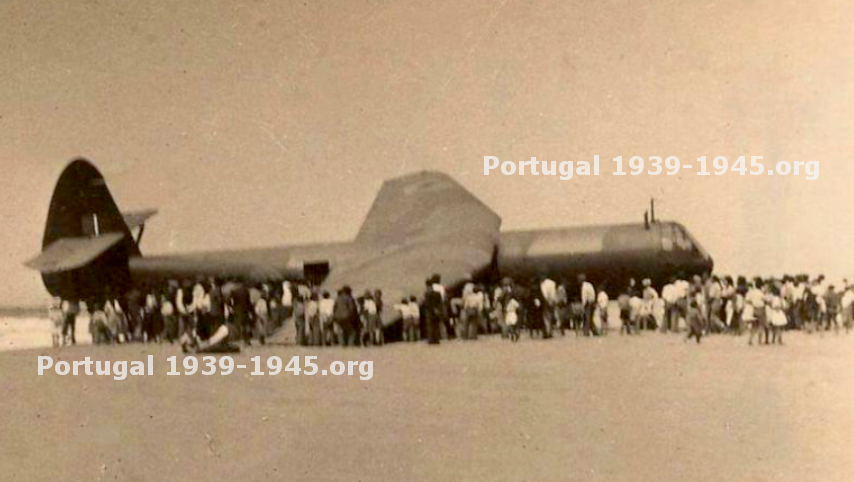
The Horsa LH122 in the Vieira de Leiria beach
(Photo: Uknwon author /C. de Modelismo da Região de Leiria)
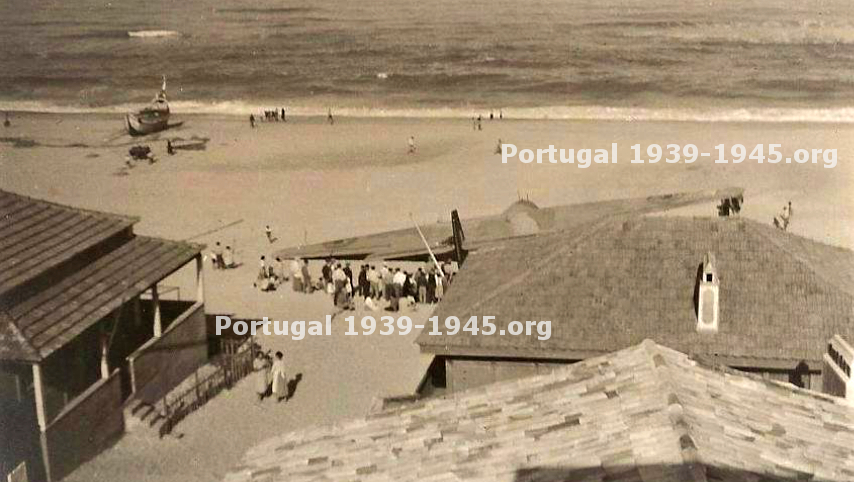
Another image from Horsa LH122 being pushed away from the beach
(Photo: Unknown author/C. de Modelismo da Região de Leiria)
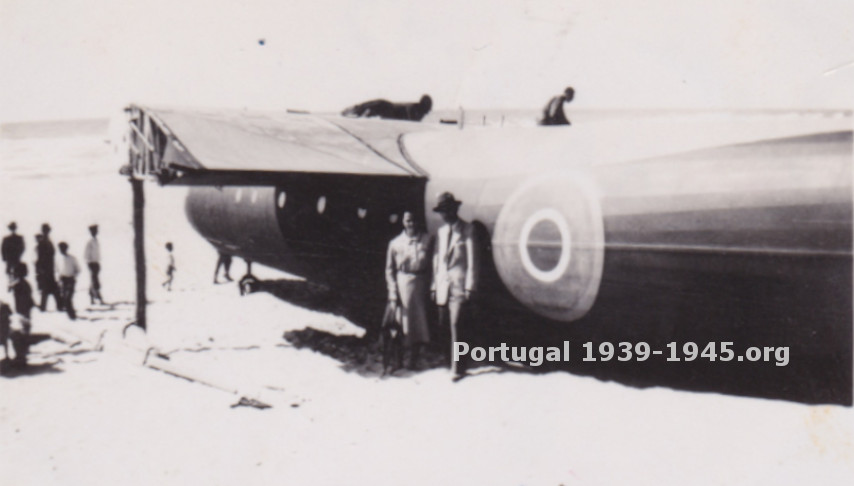
The fallen aircraft became a touristic attraction
(Photo: Personal Collection)
Date
Location
Force
Aircraft
From-To
Crew
23-08-1943
Between Leiria e Marinha Grande
Royal Army Glider Pilot Regiment
Airspeed Horsa I (Glider) LH122
Portreath (GB) → North Africa
Sgt Leonard Wright GB
S/Sgt Leslie Ridings GB
Sgt Cristopher Bruce Robinson GB
The glider participated in the Beggar/Turkey Buzzard mission which aimed the transport of gliders between the UK and North Africa to reinforce the number of Waco gliders of the 1st US Parachute Regiment.
The plane that was towing it - Halifax DK198 - had an engine breakdown and was forced to release the glider in order to reach Gibraltar. The Horsa landed on the beach of Vieira de Leiria, in Portugal.
The crew was immediatly detained by the Guarda Fiscal (Border Police) that handed them over to the Public Security Police. They were housed for the night at the Hotel Liz, in the city of Leiria. The following morning the three men went to Lisbon under escort where the PVDE - International Police - directed them to Elvas, a border city where they arrived on September, 9. It was not possible to determine when they were repatriated.
Second-Lieutenant Feliciano Gomes, of the Portuguese Aeronáutica Militar (Army Air Branch), was ordered to the site to dismantle the glider that had been left on where the waves were breaking.
Resources:
* 295 Sqn ORB - National Archives UK - London, Kew
* Arquivo do Ministério dos Negócios Estrangeiros - Portugal
* Arquivo Histórico e Militar
* Ludovic Louis
* Clube de Modelismo da Região de Leiria
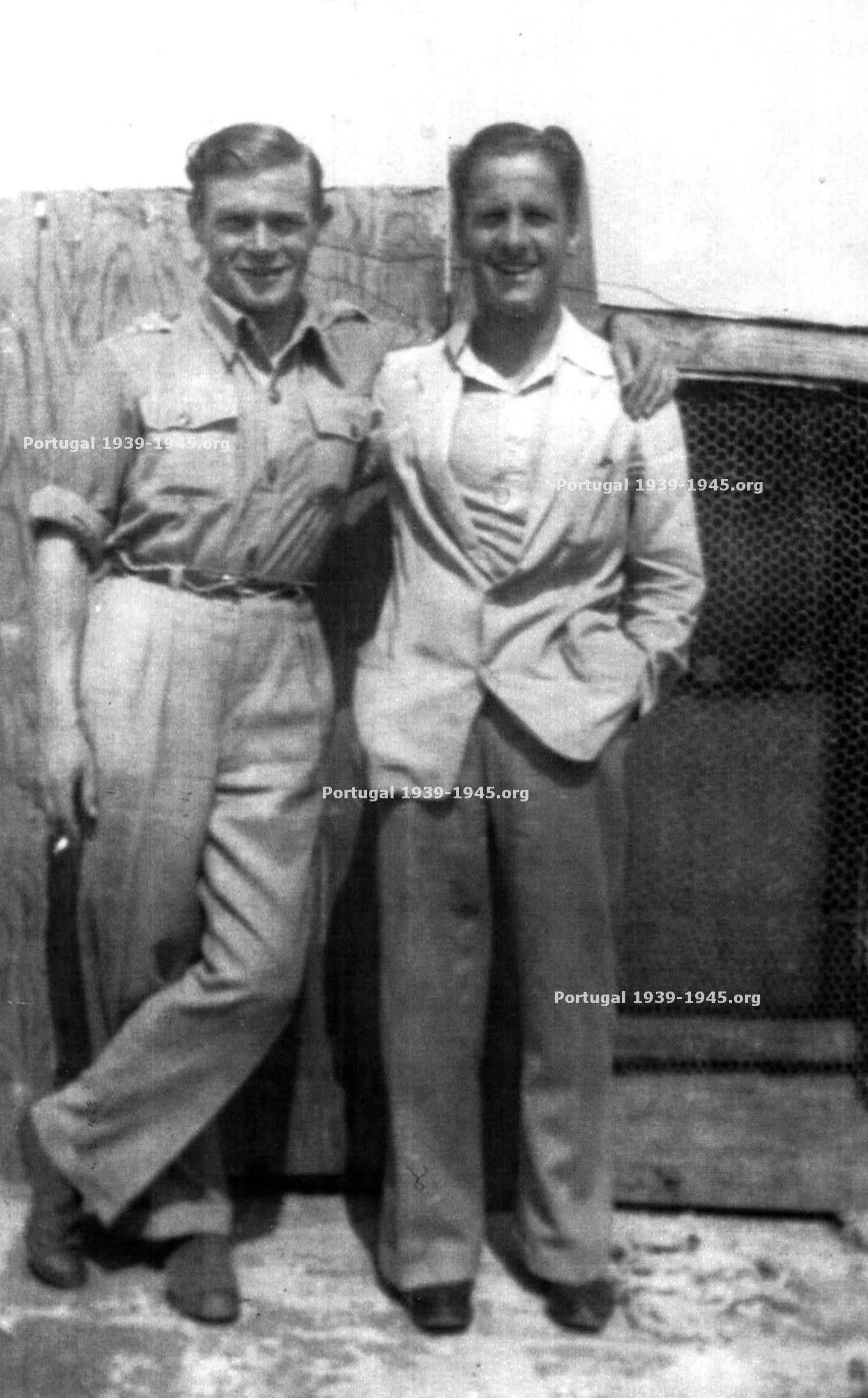
Len Wright and Leslie Ridings in Elvas
(Photo: Ludovic Louis) )
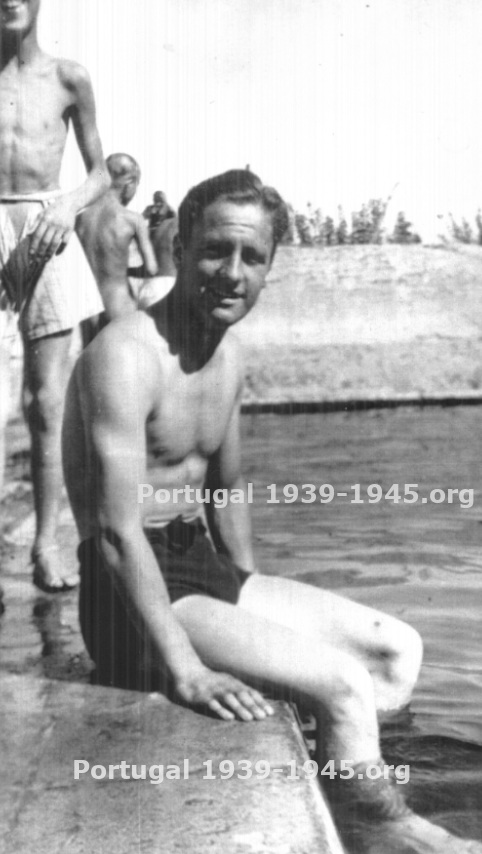
Leslie Ridings in Elvas
(photo: Ludovic Louis) )
To take it to the nearest road, which was about 3.5 kilometers away, he hired some local fishermen and teams of oxen. The operation took two days. With the collaboration of engineer Kuandall, from the Oficinas Gerais de Material Aeronáutico (OGMA), the disassembly operation went without major problems, but to accomplish the transport to a military base the fuselage was mounted on wheel-set, built on site, and then towed by a truck.
In the Leiria pine forest the tow cable, that connected the Horsa to the Halifax, was also recovered.
Several reports of the time from the Portuguese police refer the appearance of two gliders on the beach that day, but the internment of only three crew members. During investigations I carried out a few years ago into the operational records of RAF 295 Squadron - responsable for towing the Horsas to Nort h Africa - I had found only the loss of one glider on August 23.
For some time I believed that a possible explanation for the appearance of two gliders could be related with the losses of Horsa DP329 and Halifax DJ994, which had crashed close to the Portuguese coast on August 16, 1943. The crew of both aircraft had been picked by a Spanish fishing boat that took them to Bilbao.
Being the glider made out of wood, I put the hypothesis that had it floated to the Portuguese coast, landing on the beach on the same day as the other. Documents that I recently consulted in the Historical and Military Archives - and that I was unaware of when writing the book “Aterrem em Portugal!” - state that altough the first information sent from the area refered the presence of two gliders, there was in fact only one.
Leslie Ridings died on mission on 07-06-1944 during "D-Day" operations.
Carlos Guerreiro

